The week at a glance
- Pacific Diver still in Cornwall
- Barrow's Goldeneye still in County Down
- Killdeer again on Shetland
- Zitting Cisticola on Jersey
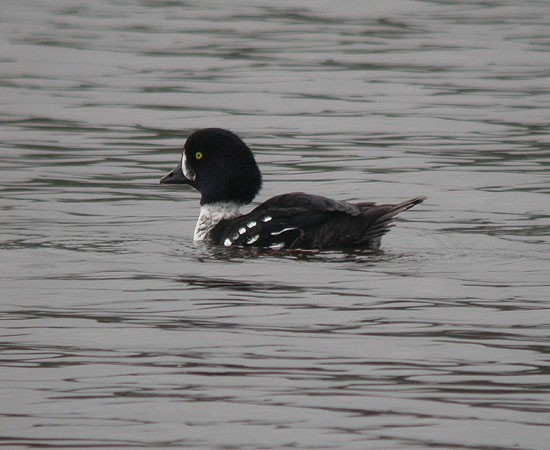
Barrow's Goldeneye, Quoile Pondage, Down (Photo:
Craig Shaw)
The door to springtime was very much ajar this week as summer visitors started to filter in to many areas of the country. Some lovely early spring stars were in evidence, but as far as the birds with top billing it was, once again, wintering quality that won the day. In Cornwall, the adult Pacific Diver in St. Austell Bay was finally seen well enough on 28th for all the long-held suspicions as to the bird’s identity to be confirmed. The bird was still present there the following day at least. Across in the north of Ireland, the drake Barrow’s Goldeneye was still to be found at Quoile Pondage (Co. Down) until 2nd. On Shetland, the Killdeer was seen again on 2nd, still in the company of Ringed Plovers, flying over Mousa. Though falling outside any official UK recording area (and, of course, being rather closer to France than Britain) Jersey served up a timely reminder that some potentially really rare vagrants weren’t too far away, with the news of a Zitting Cisticola at Grouville Marsh on 30th.
On Shetland, two White-billed Divers were noted on 30th; one was seen in Mousa Sound and another was at West Burra. A Cory’s Shearwater flew past Saltcoats harbour (Ayrshire) on 1st, an early date for a bird so far north. After the surprise numbers seen earlier in 2008, Balearic Shearwater was off the agenda until this week - up to a dozen reported, with records from four spots along the English Channel coast of Devon (including three off Seaton on 29th) with singles reported from Pendeen (Cornwall), Portland (Dorset) and Selsey Bill (West Sussex). Five Pomarine Skuas included two in the Thames Estuary (seen from Kent and Essex), two seen off North Uist along with a dark adult seen off Bowness-on-Solway (Cumbria) on 1st.

Cattle Egret, Sancreed, Cornwall (Photo:
Tony Mills)
To Cornwall, where up to 18 Cattle Egrets remained around the Treganhoe Farm area, near Sancreed, to 28th, while two birds were seen at the Hayle Estuary on 29th and a single bird was again at Widegates, near Looe, on 1st. In Devon, singles remained at Newton Abbot from 27th-2nd and again on the Otter Estuary, near Budleigh Salterton on 30th. Two birds were noted at Exminster Marshes RSPB on 30th, with one bird remaining to 31st at least. In Dorset, a single Cattle Egret remained at Abbotsbury to 30th, while in Hampshire, one bird remained at Harbridge to 27th and two birds were still at St. Leonard’s Grange to 29th. The single Cattle Egret in Gloucestershire was seen at both Slimbridge WWT and Frampton-on-Severn during the week with other lone birds remaining in Ceredigion, at Llandre, to 28th and in Cambridgeshire, near Molesworth, to 31st. Another loner was seen near Mungrisdale (Cumbria) 0n 2nd – could it be the bird seen in the county for three days in February? In County Cork, three birds were seen feeding near Lough Beg on 30th and one was at Clashmore (Co. Waterford) on 1st.
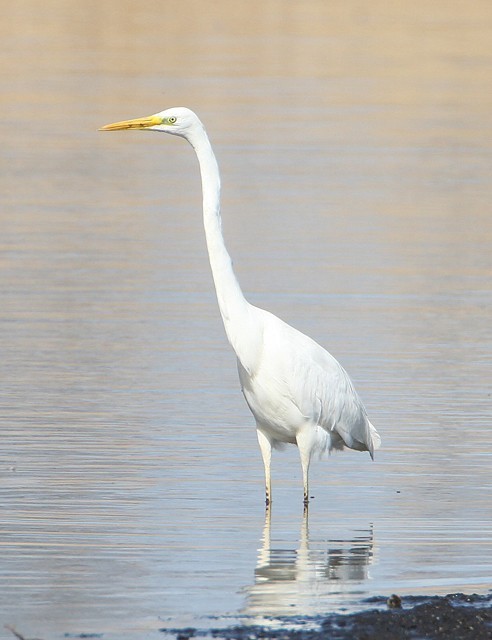
Great White Egret, Meare Heath, Somerset & Bristol (Photo:
Gary Thoburn)
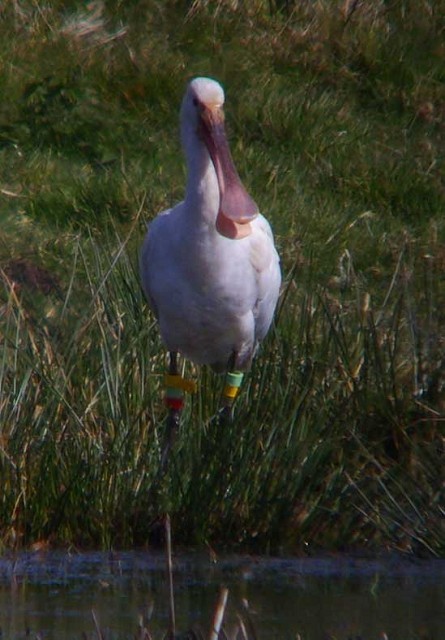
Spoonbill, Pennington Marshes, Hampshire (Photo: Linda Miller)

White Stork, Newcastle upon Tyne, Northumberland (Photo: Colin Percy)
Just three Great White Egrets were reported around the country this week. The long-staying bird on Shapwick Heath NNR (Somerset) was still present to 2nd, while at Loch Grogarry (South Uist) a Great White Egret was noted again on 27th. In Norfolk, the ultra-elusive wintering bird in the Wensum Valley was seen again on 30th. Spoonbills this week included seven off Swineham Point (Dorset) on 27th, with another single bird still at Lodmoor RSPB (Dorset) on 27th-31st. Other singles were seen in Hampshire (at Pennington Marsh and Titchfield Haven), Kent (on the Isle of Sheppey) Anglesey (on the Inland Sea) and Norfolk (at Holkham) during the week. The Glossy Ibis at Warton Marsh (Lancashire) was still present between 27th-2nd. Away from the Norfolk Broads, Common Cranes were dotted around East Anglia and further afield too. The adult and first-winter birds were still present at Queen Elizabeth II CP, near Ashington (Northumberland) from 27th-31st at least, while in Suffolk, four birds were seen over Orfordness and one was at Sudbourne, all on 31st. Also on 31st, a lone bird was seen on Fair Isle (Shetland) and was still present to 1st, before being seen later the same day, drifting over Yell. A flock of five birds staged one of their annual fly-pasts along the north Norfolk coast on 2nd, drifting over Titchwell RSPB and nearby Holme NOA. The roaming (presumed escape, from Yorkshire) White Stork was seen in Northumberland and Borders in the early part of the week and (what was probably the same bird) was back in North Yorkshire by the end of the month. A Purple Heron was a nice early morning surprise for someone at Sharpenhoe Clappers (Bedfordshire) on 2nd, another sure sign that spring overshoots are on their way.
Last week a Kentish Quail was reported, and a bird at Reston (Borders) on 21st failed to make the round-up. This week, the Reston bird reappeared from its cover on 30th, so as not to be forgotten this time around…

Green-winged Teal, Loch an t-Saile, S. Uist, Outer Hebrides (Photo:
Terry Fountain)

American Wigeon, Strandhall, Isle of Man (Photo:
Sean Gray)

Ring-necked Duck, Bassenthwaite Lake, Cumbria (Photo:
Tristan Reid)
Just as with last week, the final few days of March saw three Ross’s Geese dotted around the country. In Lancashire, one was still to be seen on the Aldcliffe Marshes from 27th-1st, while another made it to Aberdeenshire, at Loch of Strathbeg RSPB and then to Cove Bay on 30th-31st. In Norfolk, one was still to be found out on Heigham Holmes to mid-morning on 31st. The white adult Lesser Snow Goose was also still to be found alongside the Ross’s and Pink-footed Geese there until 1st at least. On 31st, a Snow Goose was reported flying over Cromer, and then offshore from Cley, during the middle of the morning, only for a late afternoon report of the Broads Snow Goose to emerge. As mentioned earlier, April 1st saw a Snow Goose still firmly in place at Heigham Holmes, and with no Ross’s to be found, it seems as though it was actually the latter, not the former species that headed along the coast. Two first-winter Snow Geese were noted again this week, the long-staying bird on Orkney (at Finstown) was still present to 29th, while in Cumbria, a youngster was at Skinburness on 28th. The blue Snow Goose remained at Loch Connell (Dumfries & Galloway) between 28th-1st. A Richardson’s Canada Goose was still in County Sligo, around Ballintemple on 31st. Black Brants this week managed a tally of seven; one was again at Spurn (East Yorkshire) on 29th-30th, with another noted at Freiston Shore RSPB (Lincolnshire) on 30th-31st. In East Anglia, singles were noted at Shotley Marshes (Suffolk) and Titchwell RSPB (Norfolk) with two birds reported at Cley Marshes NWT (Norfolk) on 2nd. The final bird of the septet was seen at Dungarvan (Co. Waterford). In Wales, the female Black Duck at Marloes Mere (Pembrokeshire) was seen on 27th, 30th and 1st (having been missing on 29th). The drake American Wigeon remained on the Isle of Man to 30th at least, and this bird was the species’ only representative of the week. From 13 two weeks ago, to nine last week, and now eight male Green-winged Teals this week. The duo of drakes remained at Eyebrook Reservoir (Leicestershire) to 2nd, while hangover singles remained at Loch an t-Saile, South Uist (Outer Hebrides) to 29th, at Marshside RSPB (Lancashire) to 30th, at Campfield Marsh RSPB (Cumbria) and Bell Harbour (Co. Clare) to 31st and Slimbridge WWT (Gloucestershire) to 2nd. A new drake Green-winged Teal was seen at North Duffield Carrs (North Yorkshire) on 27th-31st. Five (or six) Lesser Scaups remained across England and Scotland this week. The first-winter drake at Swithland Reservoir (Leicestershire) was still present from 27th-29th, while adult drakes were still at Soulseat Loch (Dumfries & Galloway) to 27th (then moving to Auchenreoch Loch from 30th-1st at least), on Coot Loch, Benbecula (Outer Hebrides) to 28th, on Quarry Loch, Blair Drummond (Forth) to 30th and at Barrow Gurney Reservoir (Somerset) to 2nd. A drake at Loch an Fhaing, Grimsay, North Uist (Outer Hebrides) on 1st could have been the bird from Benbecula moving between the islands, or venturing northwards and further afield. Another week passes with another slight decline in the number of Ring-necked Ducks being reported - just six seen, with three of those in Ireland. A “new” drake was at Killea Reservoir (Co. Derry) on 29th, while other Irish birds remained at Enniskillen, the female still on the Racecourse Lough, to 29th, while a drake was seen again on Blanket Nook, Lough Swilly (Co. Donegal) on 27th. English birds all related to lingering females; at Monkmoor Pool SWT (Shropshire) to 28th and at Bassenthwaite Lake (Cumbria) and Stithians Reservoir (Cornwall), both to 2nd. With King Eiders this week it was 3-1 to the immature drakes; the young males on the Taw/Torridge Estuary (Devon) and off Girdle Ness (Aberdeenshire) both remained in to another week (31st and 2nd respectively), while the hat-trick was confirmed with a new youngster off Ruddon’s Point (Fife) on 27th. An adult male King Eider was seen off Girvan (Ayrshire) from 27th-2nd. A drake Surf Scoter lingered in Largo Bay (Fife) this week, but the rest of the species’ role-call for the past week was made up of familiar females; singles remained off Dawlish Warren (Devon) to 1st and Ovingdean (East Sussex) to 2nd, and the two female Surf Scoters remained off Galway to 1st at least.
After the reappearance last week, in Hampshire, of the juvenile White-tailed Eagle it is tempting to speculate that this may have been the bird that accounted for sightings in Wales and the north-west this week. On 27th, one was seen over Prescot (Lancashire) and was followed, the following afternoon, by an immature bird being seen over Dolwyddelan (Conwy). On 29th, a juvenile White-tailed Eagle was seen heading south over Seaforth LWT (Lancashire). Equally as spectacular must have been the Gyr Falcon reported flying past Annagh Head, out on the gloriously craggy Mullet peninsula (Co. Mayo) on 31st. Despite dozens of accepted records of this most regal falcon, a Gyr’s appearance will always set the heart beating a little faster. Late March is prime time as far as the species appearances here are concerned and the Annagh Head bird arrived 22 years to the day since Britain’s most famous Gyr was found, in the coastal quarry at Berry Head in Devon. Just three Rough-legged Buzzards to report this week. One flew over Oxenhope (West Yorkshire) on 29th, while one was still present on the Isle of Sheppey (Kent) to 30th. Another at Bittering GP, near Dereham (Norfolk) on 1st-2nd had been present in the area since February 7th…! Three early reports of Black Kite this week, with singles near Littleton Panell (Wiltshire) on 28th, over Regent’s Park (London) on 30th and near Aldershot (Hampshire) on 1st. A ringtail Montagu’s Harrier was reported from Home NOA (Norfolk) on 2nd.

Kentish Plover, South Ford, S. Uist, Outer Hebrides (Photo:
Terry Fountain)
The two first-winter Spotted Sandpipers maintained their positions for much of the week. At Lisvane Reservoir (Glamorgan), the bird there was still present to 30th, while the bird at Kinneil Lagoon (Forth) was still present to 2nd. At Bowling Green Marsh RSPB (Devon), the first-winter Long-billed Dowitcher was seen on 27th and 29th while in County Cork, the wintering Lesser Yellowlegs was still present, at Rosscarbery, to 26th. The Kentish Plover was still on South Uist (Outer Hebrides) on 28th-1st.
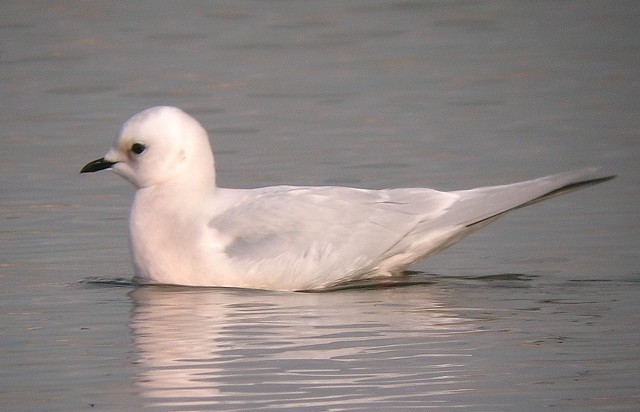
Ross's Gull, Marton Mere, Lancashire (Photo:
Gavin Thomas)
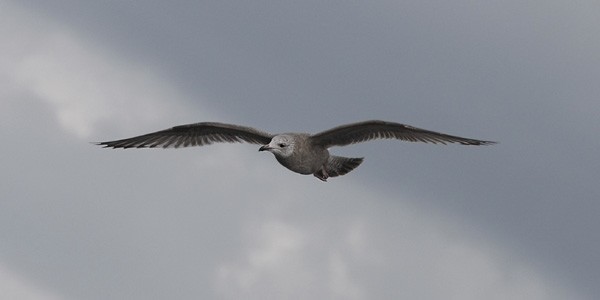
American Herring Gull, Galway, Galway (Photo:
Paul & Andrea Kelly)

Ring-billed Gull, Strathclyde Loch, Clyde (Photo:
John Molloy)

Glaucous Gull, Linton Lane NR, Northumberland (Photo:
Stewart Sexton)

Iceland Gull, Linton Lane NR, Northumberland (Photo:
Stewart Sexton)
After an east coast bird last week, the north-west got in on the act this week with a superb adult Ross’s Gull spending the afternoon of 31st at Marton Mere (Lancashire). The fifth record for the county (once Seaforth moved out of Merseyside), but the first record in Lancashire since 1995. In Somerset, the second-winter Franklin’s Gull remained at Chew Valley Lake until 28th, while the first-winter Bonaparte’s Gull at nearby Cheddar Reservoir also chose the 28th as its last day of residence in the Westcountry. Ring-billed Gulls this week included three birds still in Wales (Glamorgan, Pembrokeshire and Anglesey) and at least three in Ireland (in counties Clare and Galway). An adult was seen off Swineham Point (Dorset) on 27th and the adult at Strathclyde Loch (Clyde) was seen again on 31st. After no reports last week, one of the Irish American Herring Gulls in Galway resurfaced again, the juvenile in place to 2nd. A new juvenile was seen (and photographed) near Loop Head (Co. Clare) on 29th. A dismal week for Caspian Gulls, with only six birds reported - a third-winter was at Arpley (Cheshire) on 28th, one at Dungeness (Kent) and a third-summer at Rutland Water (Leicestershire), both on 30th, and second-winters in Suffolk, at Minsmere RSPB on 31st and Landguard NR on 2nd. Minsmere also added an adult Caspian Gull to the impressive haul of birds seen there in the past six weeks or so. Glaucous Gulls numbers dropped to around 40 birds this week, with three juveniles at Linton Lane (Northumberland) on 28th-31st being of note. Three or four birds were noted in Cleveland and Northamptonshire. Iceland Gull numbers dropped off markedly this week, some 85 or so noted. Eight birds remained in Mallaig harbour (Highland) to 30th, five birds were on Lewis on 30th, while four birds were still on St. Mary’s (Scilly) to 2nd. Two birds were noted on Dunster Beach (Somerset) on 28th, but 13 at Nimmo’s Pier on 2nd was the only double figure count of the week. Five or six Kumlien’s Gulls included third-winter birds at Moore NR and Arpley (Cheshire) on 27th-28th, Dundrum (Co. Down) on 28th and Larne (Co. Antrim) on 31st. The second-winter was reported again at Fraserburgh (Aberdeenshire) on 30th and the same date saw an adult appear at Swillington Ings (West Yorkshire). A second-winter Kumlien’s Gull was at Nimmo’s Pier (Co. Galway) to 2nd, where the adult Forster’s Tern remained to 31st at least. In Northern Ireland, the Forster’s Tern at Strangford Lough (Co. Down) was present to 1st.
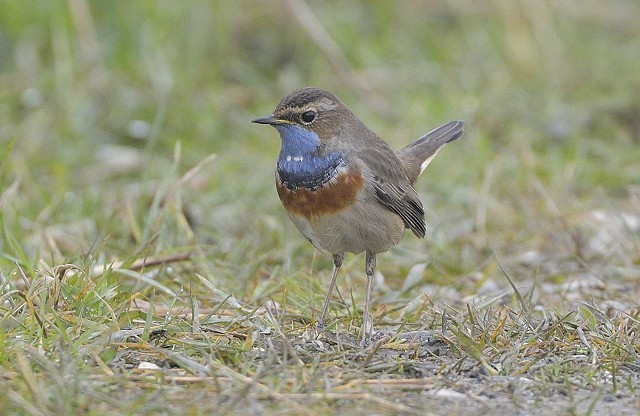
Bluethroat, Minsmere RSPB, Suffolk (Photo:
Mike Lawrence)
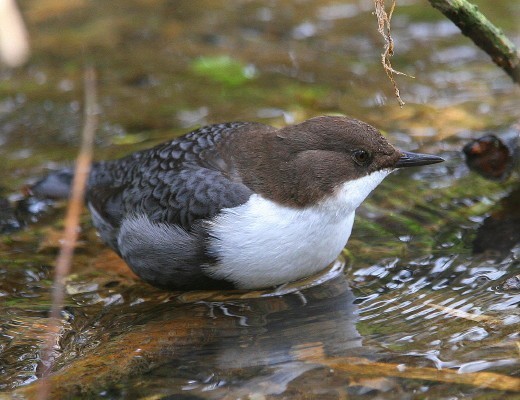
Black-bellied Dipper, Watton, East Yorkshire (Photo:
Alan Bowness)

Waxwing, Bingley, West Yorkshire (Photo:
Mark Ranner)
Last week’s male White-spotted Bluethroat at Winterton (Norfolk) remained to 27th (and another was reported from Suffolk, at Lowestoft, on 26th). The third east coast arrival in the space of 24 hours came at Minsmere RSPB (Suffolk) with another male appearing there on 27th and remaining to 30th. A flock of 53 Waxwings in Aberdeen (Aberdeenshire) on 27th was one of the biggest flocks of the winter, with other groups remaining in Derbyshire (four at Cutthorpe), in West Yorkshire (four at Bingley) and in County Durham (five at Esh Winning). A lone bird spent three days at Ballymena (Co. Antrim) to 28th. The Dark-breasted Barn Owl remained at Wacton Common, Long Stratton (Norfolk) to 2nd, while at Blacksod (Co. Mayo) a Snowy Owl was seen on 25th and 27th (and was perhaps the bird seen in Galway earlier in the winter). The Black-bellied Dipper at Watton (East Yorkshire) was seen from 27th-29th.

Firecrest, Flamborough Head, East Yorkshire (Photo:
Dave Mansell)
Britain’s earliest ever Great Reed Warbler remained at Porth Hellick, St. Mary’s (Scilly) until 27th. Just one Hume’s Yellow-browed Warbler was noted this week, with the bird at Tehidy CP (Cornwall) remaining to 1st at least. At nearby Rosewarne, a Yellow-browed Warbler remained to 30th, with a second inornatus noted at Swallow Pond (Northumberland) on 1st. The singing male Pallas’s Warbler in Weymouth (Dorset) was still seen daily from 27th-1st. Although not a species associated with a rarity round-up, the week’s significant arrival of Firecrests certainly warrants a little attention. Excellent numbers of these gorgeous birds were noted; nine were seen around Beachy Head (East Sussex) on 28th, at least eight were at Hengistbury Head (Dorset) on 29th, eight were at Landguard Point (Suffolk) on 30th while eight were seen at Spurn (East Yorkshire) and seven were at Flamborough Head (East Yorkshire) on 31st. The largest total of the week though was 15 at Portland (Dorset) on 30th. The prize for the most popular bird goes to the Firecrest frequenting Kensington Gardens (Greater London), a well-deserved patch tick for deprived inner-city birders.

Great Grey Shrike, Half Moon Plantation, Gloucestershire (Photo:
Oliver Wadsworth)
In Suffolk, the two Penduline Tits were seen at Minsmere RSPB on 26th, and one was heard there on 2nd. Fourteen Great Grey Shrikes were still being seen around the country, with popular birds at Kelling Heath (Norfolk), Padiham (Lancashire) and on the traditional wintering site of Thursley Common (Surrey) being among the lingering individuals noted. Finally, a Little Bunting was seen with Reed Buntings at Jackhouse Reservoir (Lancashire) on 30th.
Photo of the Week

Barn Owl, Altcar Moss, Lancashire (Photo:
David Cookson)
Once again an owl image takes the honours this week. David Cookson has incorporated all the right ingredients for a successful Barn Owl image: classic hunting pose, warm lighting from low-altitude sunlight and good eye contact with catchlights. What makes this image stand out, though, is the fact that David has captured this bird as it flies in front of a shaded backdrop. This gives a natural, nocturnal feel to the image and makes the subject leap out from the uniform black background. Additionally, David has used a near-square crop that reflects the aspect ratio of the subject and provides balance to the composition.
Other notable photos
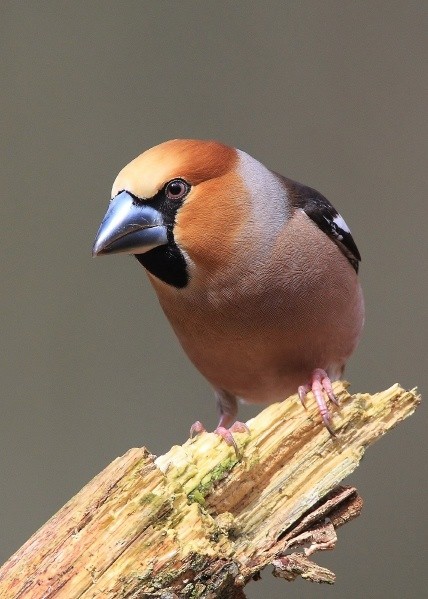
Hawfinch, Forest of Dean, Gloucestershire (Photo:
Lewis Thomson)

Common Kestrel, Marshside RSPB, Lancashire (Photo:
Tom Charles)

Great Crested Grebe, Mere Sands Wood LWT, Lancashire (Photo:
Tom Charles)

Cattle Egret, Harbridge, Hampshire (Photo:
Jim Almond)
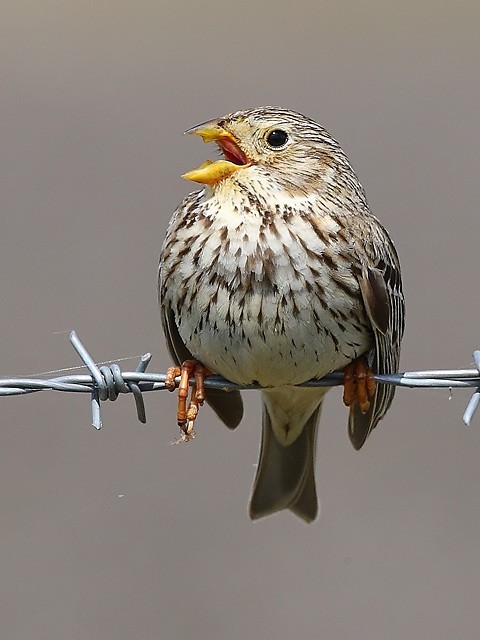
Corn Bunting, Spain (Photo:
Steve Fletcher)

Common Buzzard mobbed by Rook, Dartmoor, Devon (Photo:
Chris Buckland)

Little Grebe, Marshside RSPB, Lancashire (Photo:
David Cookson)
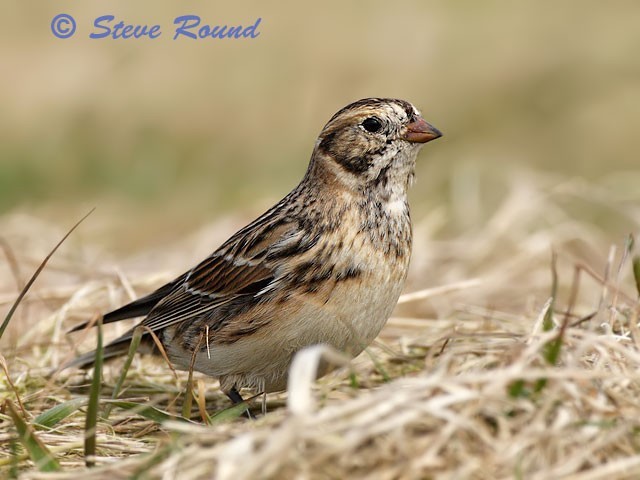
Lapland Bunting, Cley Marshes NWT, Norfolk (Photo:
Steve Round)

Black Guillemot, Peel, Isle of Man (Photo:
Sean Gray)
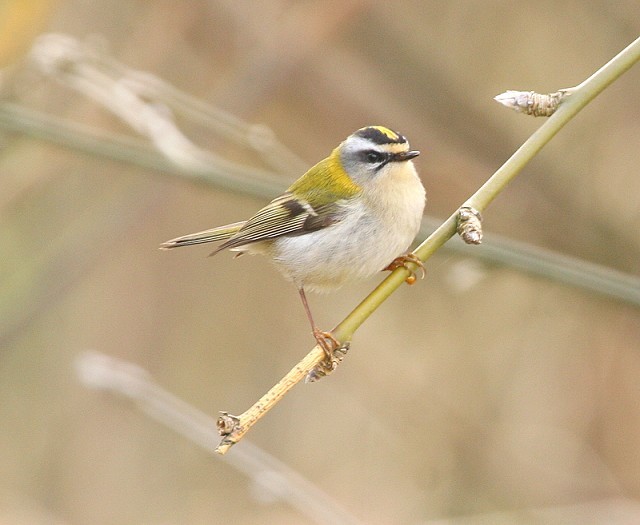
Firecrest, St. Mary's Island, Northumberland (Photo:
Brian)

Avocet, Inner Marsh Farm RSPB (Members Only), Cheshire (Photo:
Richard Steel)

Starling, Milton Keynes, Buckinghamshire (Photo:
I. Johnston)

